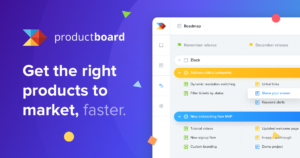
A/B Testing
How Much Feedback is Enough Feedback?
An essential component for a well-oiled machine that is a product-led company is feedback. It’s a tool that can help better your product, build meaningful

An essential component for a well-oiled machine that is a product-led company is feedback. It’s a tool that can help better your product, build meaningful

When you think of essential aspects of apps, feedback inevitably comes to mind. User feedback can serve many purposes in product-led growth, both on web

Product-led companies are praised for pouring their heart and soul into the product that ends up in their customers’ hands. While the product-led approach is

This paragraph caught my eye: “Slow is a dangerous place for a product company to be. Slow product teams tend to be outcompeted by fast

In this session we explore the Productboard platform. Readers of this blog know that a Contextual we are extremely passionate about: JTBD (Jobs to be